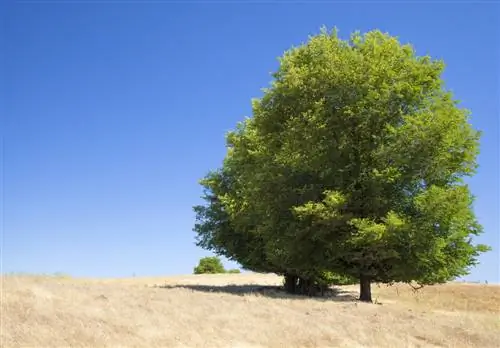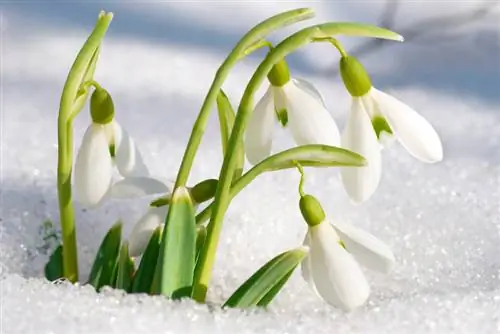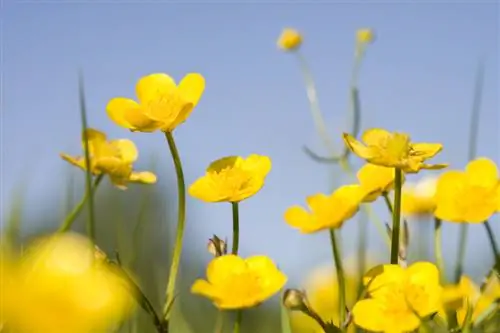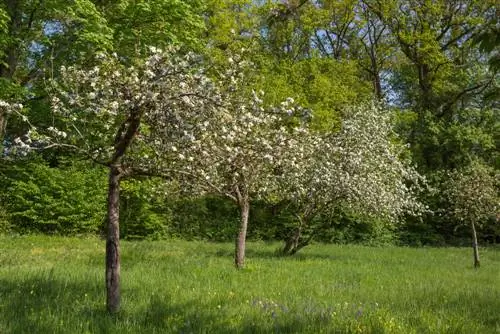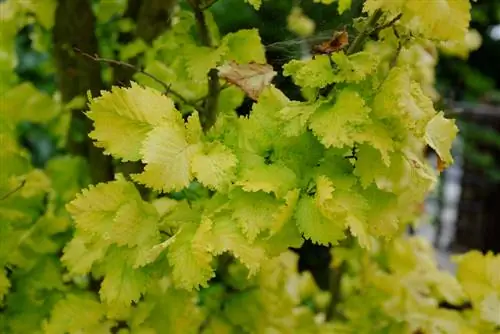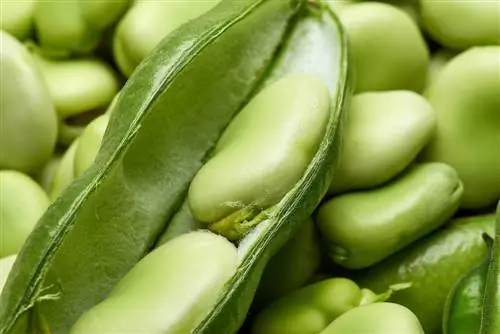- Author admin [email protected].
- Public 2023-12-16 16:46.
- Last modified 2025-01-23 11:21.
Of the numerous elm species, three are native to Europe, including the field elm. In addition to the typical characteristics of this deciduous tree genus, the variety has some very special properties, which the following article will inform you about. Thanks to the clear plant portrait, it will no longer be difficult for you to distinguish a field elm from its counterparts in the future.
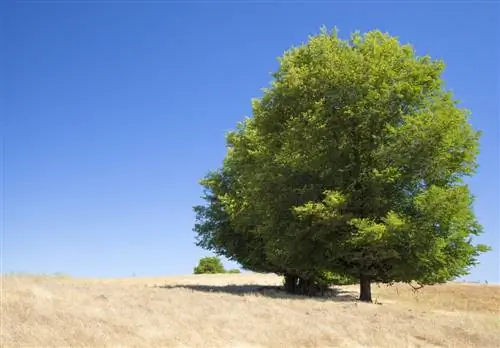
What are the characteristics of field elm?
The field elm (Ulmus minor) is a deciduous tree native to Europe and grows up to 40 m high. It has red-brown flowers, dark green leaves, gray-brown bark and deep roots. The fruits are winged nuts. The field elm is used in natural medicine and for high-quality wood.
General
- German name: field elm
- other names: Iper, Rot-Rüster
- Latin name: Ulmus minor
- Age: up to 400 years
- bastated with the mountain elm
Occurrences
Dissemination
- in many parts of Europe
- Canary Islands
- Caucasus
- Asia Minor
- North Africa
- especially in the river and stream valleys in the Hartholzaue
- both in lowlands and at high altitudes
- the most susceptible elm species to Dutch elm disease
- up to altitudes of 500 m
Location preferences
- nutrient-rich soils
- calcareous soils
- Loam and clay soils
- Use: avenue or park tree
- grows in mixed deciduous forests
Habitus
- maximum height: up to 40 m
- summergreen
- also occurs as a multi-stemmed shrub
Bloom
- Colour of flowers: red
- Shape of flowers: false umbels
- hermaphrodite, but predominantly male
- Flowering time: March to April
- Length of flowers: 15-30 cm
- appear before the leaves emerge
- 3-7 stamens
- stemmed
- Pollination by the wind
- red-brown anthers
leaves
- pointed, elliptical round
- rough surface
- asymmetrical
- Length of flowers: 6-10 cm
- Width of flowers: 8 cm
- Length of petiole: 1 cm
- Color of the top of the leaves: dark green
- Color of the underside of the leaves: brownish tufts of hair
- Autumn color: yellow
- alternating arrangement
- single or double sawn
Bark
- Bark color: gray brown
- forms dandruff
- Cork strips on the branches
- cracked with age
- young shoots are red and hairy
Root
- Stake Heartroot
- very deep
Fruits
- Color of the fruits: gray brown
- Type of fruit: Nuts
- Size: 13-20 mm
- winged
- Fruit ripening: end of May
- Spread through the wind
- stemmed
- ovoid
- cut at the tip
- Seeds are formed in the upper part of the fruit
Application in naturopathy
- plant parts used. Leaves and dried bark
- helps against diarrhea, eye and skin diseases, ringworm
- has an astringent effect, blood and wound healing, tonic, diaphoretic effect
- contains: potassium, tannins, silica and mucilage
Uses and properties of wood
- Color of the wood: yellowish or gray, brown at the core
- hard and shockproof, very robust
- Use: parquet and fine seating

